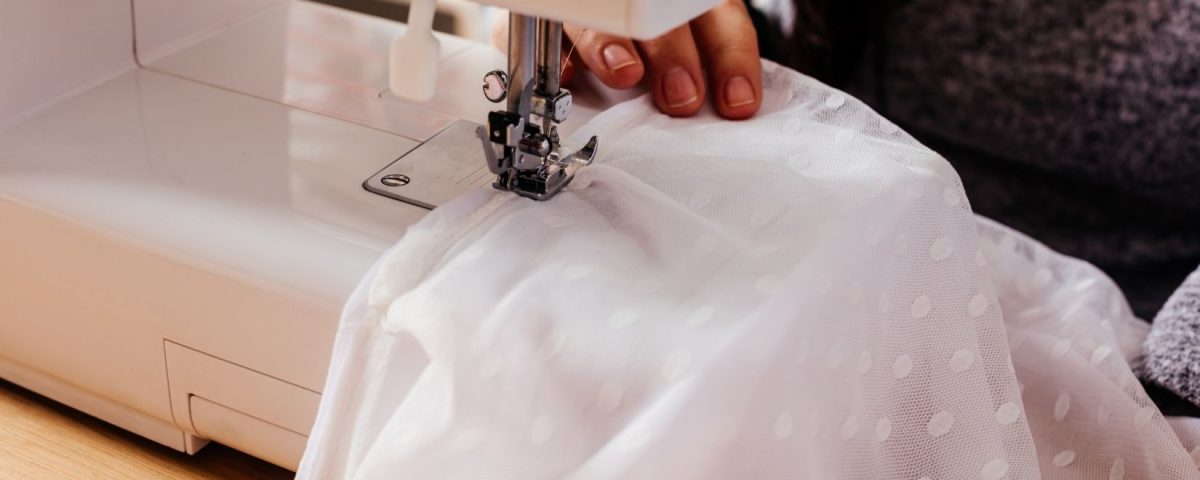- Eco Friendly Dry Cleaning and Laundry
- (619) 281-0031
11 Frequently Asked Questions About Wedding Dress Alterations

Whether you are still shopping for your dream wedding gown or have already bought one, you most likely have all kinds of questions about the alteration process running through your head. After all, your wedding gown is perhaps one of the most expensive items on your shopping list — so making sure it fits you perfectly is pretty important.
With that in mind, we have put together a list of wedding dress alteration tips you should know to feel beautiful and comfortable on your big day.
Q1. Is it even necessary to get my wedding dress altered?
Almost every wedding dress will require some form of alteration to ensure it fits you perfectly. Unless it is custom-made, wedding gowns are typically based on a generic form, so altering your dress is essential if you want it to fit your unique body type well. Count yourself lucky if your wedding gown fits you perfectly right out of the box and needs only minimal alterations.
Q2. Where do I get my dress altered?
When choosing a tailor or seamstress, we highly recommend picking one who specializes in wedding dresses. You want someone experienced in working on bridal gowns since they are far more intricate, complex, and delicate than regular clothing or even bridesmaid dresses. Many bridal shops will refer you to trusted tailors or seamstresses in your area — but if you are on your own to find one, look for places with excellent online reviews. If you have friends who have recently tied the knot and were happy with their alterations experience, you could also ask them to recommend their tailor or seamstress.
Q3. When should I start altering my dress?
Our recommendation is to start the alterations process about 2 to 3 months before the wedding date. However, all of it depends on your seamstress’s schedule and preferences. Therefore, we recommend consulting with your preferred seamstress beforehand to pick the most convenient time for your first alterations appointment.
If you are late in scheduling an appointment, you may find that all the seamstresses have already been booked, and you may not be able to work with the person of your choice.
Q4. What if I gain or lose weight?
We keep reminding our brides that this is OK! With the stress of wedding planning naturally comes some weight loss or gain, but because alterations are a multi-appointment affair, there is generally enough time to adapt the dress to accommodate your body’s changes. That said, if you are engaging in some form of weight loss diet or workout, make your seamstress aware of this right away. They may change the alterations process to accommodate your weight loss.
We recommend that brides who intend to lose a significant amount of weight book their subsequent alterations appointments as close to their wedding date as possible to ensure that they have the maximum amount of time to slim down and that their seamstress does not have to redo alterations on the dress too many times.
Q5. What should I carry to my fitting appointment?
Always remember to bring your wedding shoes. Their height is vital in determining the hem length. You can also bring undergarments — and if you have multiple options, your seamstress will help you pick which will work best for your body type and shape. Bringing bridal accessories, such as earrings, necklaces, and totes, is also a good idea if you want to incorporate them into your wedding attire.
Q6. What if I do not like how my dress fits after my second appointment?
Please make your seamstress aware of this information. They are there to put in the effort to make your wedding dress fit you exactly the way you want it to. When you pick up your dress from the shop, it may not look right, which is why you start making alterations. However, it may also not be completely perfect at the second fitting either, so be sure to communicate with your seamstress about any issues that need to be addressed. About three to four appointments are generally required to get a wedding dress that is just perfect.
Q7. How much of a dress can I alter?
Your seamstress can do a lot for you — from adding sleeves/straps to changing the neckline, lowering the back, and even making an overskirt or lace topper for an alternative bridal look. The degree of alteration possible will vary depending on how the dress is constructed in some cases. Certain alterations could compromise the structure of the dress. You should call your seamstress before your first fitting appointment and discuss any alterations you would want to have done. This will ensure that the type of alteration you want is possible and that the seamstress is confident in doing it.
Q8. Should I buy a dress a size big or a size small?
If you are in-between sizes or measuring for one size in your bust and another in your hips, it is always advisable to buy a size up. It is possible to have dresses taken in, but it is impossible to have dresses taken out.
Q9. Is the fabric of my dress a factor in determining the cost of an alteration?
Yes — certain fabrics are more difficult to work with or take more time-consuming. You should expect a higher price for alterations if your dress has lace or beading, as these trims are more intricate and take far longer to take apart and put back during the alterations process. If your dress has multiple layers, you can expect a higher price as well. In general, the higher the number of layers in a dress, the longer it will take to alter or hem them all, and the more money it will cost.
Q10. What are the most commonly requested bridal gown alterations?
Standard alterations include hemming and bustling the dress and making body alterations such as taking the dress in through the bust, waist, or hips. These are some other common alterations:
- Adding a waist stay: An elastic piece that goes on the inside of your wedding dress around your waist to help create a more form-fitting silhouette is called a waist stay. If you are wearing a strapless dress, a waist stay is recommended so that you do not have to keep tugging your dress up throughout the night.
- Shortening the straps: To allow more brides to wear their dresses, some wedding dress designers may make the straps of their dresses a little longer. It is much easier to shorten a strap than to lengthen one.
- Altering the closure: When it comes to how the dress closes, this option is for the bride who wants something truly special. Some brides are content with the traditional zipper, while others prefer exquisite buttons running down the back or some other unique design detail to stand out.
- Altering the neckline: Some brides like a more plunging neckline, whereas others prefer a more classic look. This alteration allows you to customize your dress to your preferences.
- Changing the back: Changing the back of a dress does not necessarily indicate creating a dress with a low back. It can also be altered to include design details like beading, lace, or a sheer panel.
- Other special alterations: To put it simply, this is the idea of taking a dress that you like (but is not exactly what you envision) and making it precisely what you had in your mind. Some examples include adding a fabric panel, adding length to the train, layering the dress fabric, embellishing the dress, or updating a vintage dress.
Q11. Is it necessary for me to bring someone with me to my appointment?
Yes. Make sure you have someone with you whose opinion you trust and who will stand with you no matter what happens. Everyone has an opinion, but it is your big day, so you have the option to be picky about the types of opinions that you bring into your appointment for alterations.
Final Notes
Ultimately, you can get your wedding dress altered just as you want, so long as you have enough time and budget. Just always remember to be as honest as possible with your seamstress throughout the entire process.
